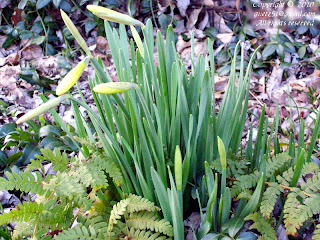Deadly April snowstorm on the prairie
I found this account of the terrible Easter Blizzard of 1873 in a history of Seward County, Nebraska that was published in 1920. This account is part of a longer passage that was reprinted from W. W. Cox's earlier history of Seward County.
 |
| Seward County in Nebraska |
I have edited Mr. Cox's prose a little, breaking the very long paragraphs-- and in some cases, the very long sentences-- to make them easier to read. In doing this, I changed some words and punctuation. Please see the original if you want to quote something from this account.
 |
| Nebraska in the United States |
The spring of 1873 was very pleasant, and people had made gardens. Prospects were so fair for an early summer that the ordinary straw stables for stock had been neglected and permitted to become open, the sides having been blown away. In fact, all precatution and care for the protection of man and beast from the cold blasts of a winter storm had been forgotten.
On the tenth of April, a rain commenced to fall, the wind blowing mildly from the south-east, both continuing until the night of the twelfth. The clouds, thickening at times, were accompanied by lightning and thunder.
We were living in our twelve foot pioneer residence with two windows. On that memorable night of the twelfth of April, we were awakened by an unusual roaring of the wind. Glancing at the windows, we thought the moon was shining, but soon recalled the fact that there was no moon.
We got up and opened the door, and were almost instantly made aware of the source from which the disturbance and the light in the windows came. The wind had veered to the north-west and seemed to have the force of a cyclone, and the air was so full of snow as to produce a moonlight appearance.
In fact, the most terrifying blizzard we had ever witnessed was before our drowsey eyes in all the horrors that could be depicted. We did not tarry long to enjoy the panarama as the ruling elements seemed to suggest that we retire and shut the door.
This blizzard continued three days and nights without abatement for an instant. The doleful tones, ever present in our ears during that time, scarcely left us even when in the refreshing embrace of slumber.
And there was scarcely a minute during the seventy-two hours that an object of any dimension could be discerned ten steps distant. Two minutes exposure to the full force of the storm would cause the vacant places in a person's clothing to fill full of the celebrated (but not appreciated) "beautiful snow."
Several of our neighbors saved their cows, horses, and mules by taking them into their houses. We saved three out of four small hogs and about thirty hens by dividing our twelve-foot space with them. We did not bring these animals in until the second day, and one of the hogs died in fifteen minutes, after being brought in.
Charles Emerson, living is a sod house on a hill in L precinct, kept his horses in a dugout stable at the foot of the hill, perhaps six or eight rods from his house. The storm was so blinding and severe that he did not venture to go and attend to them during the three days.
After the storm abated, his heart almost failed him when he went to his stable and opened the door that he had carelessly left only half-closed. He found the interior packed full of snow and not the least sign that his faithful horses were alive.
He secured a shovel, and after digging a while, came upon the horses, both standing up. The snow had filled in so close around them that they could not lay down. The warmth of their bodies melted the snow sufficiently to give them breathing room, and both were alive.
This terrible storm raged during the 13th, 14th, and 15th of April, the latter being Easter Sunday, and would justly pass to history as the greatest Easter storm on record.
Source: Pages 24-26, General History of Seward County, Nebraska, by John Henry Waterman. Published in 1920 in Beaver Crossing, Seward County, Nebraska.
Other histories tell of blizzard winds that tore the roofs off flimsy homesteader shacks, exposing the occupants to the elements. Other settlers froze to death because they didn't have enough firewood on hand. Some lost their way between house and barn and wandered off into the blizzard. Others were caught traveling or hunting on the prairies and either froze to death or smothered under the snow. Thousands of livestock died, and a great deal of wildlife perished as well.
After the storm, snowdrifts were fifteen and twenty feet tall. Some settlers who lived in dugouts had to burrow through deep snowdrifts. Hilltops were swept bare, but the draws were full of deep, hard-packed snow. The best of the spring grass, which the surviving livestock really needed, was buried under the snow for a long time afterward. Many bodies of both man and beast were not found until the snowdrifts finally melted.
Read more:
Text of a Nebraska historical marker for the Easter Blizzard of 1873
Out of Old Nebraska: April Blizzard of 1873
The Easter Storm of 1873
Google Books search for "Easter Storm of 1873"

































